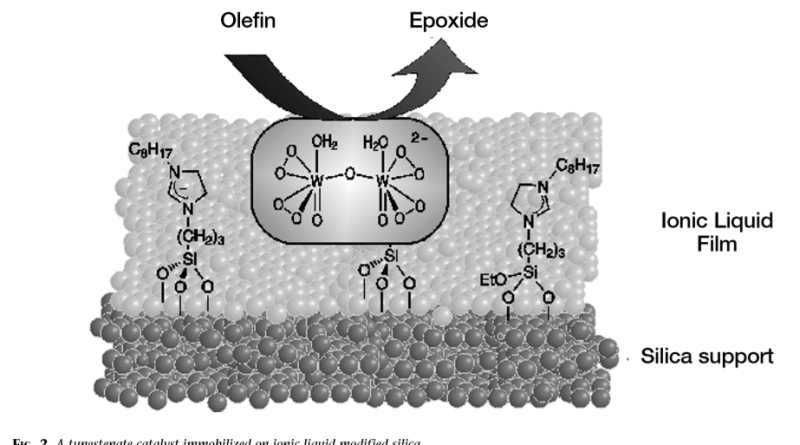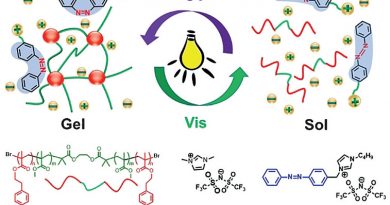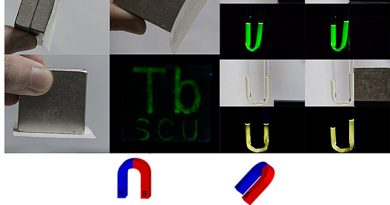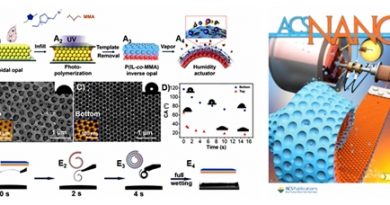离子液体在合成与催化中的应用
如内容侵权,请联系管理员删除,本站不对内容提供者侵权行为负责。 离子液体 - 产学研 | Ionic Liquids Platform 欢迎 专家学者、从业人员 参与 成为“离子液体”合伙人,有偿分享资源、知识、讯息!

Ionic Liquids as Solvents
How do chemists use ionic liquids in place of organic solvents? It may seem like the answer to this question is very simple, perhaps entirely obvious, i.e. “just dissolve your compounds in the ionic liquid and get on with it,” but the reality is somewhat more complicated. Synthetic chemists have geared up virtually everything of what they do to being conducted in volatile solvents. After all, the solvent is not
part described in the first article in this issue by Keith Johnson have certainly captured the imagination of chemists across the globe, and without at doubt, nowhere more than in synthesis and catalysis.1 The reasons for such phenomenal interest in this area are due to several factors, notably: 1. synthetic chemists are limited by the available molecular solvents in which they can conduct chemistry; 2. increasingly the solvents chemists like to use are banned by international protocols determined to reduce pollution, of which volatile organic compounds represent a significant part; and 3. the prospect of discovering new chemistry or the ability to design a solvent that facilitates/ allows a specific reaction to occur. The reasons stated above are all important and many papers in the literature respond directly to such challenges. However, there are a large number of papers that justify their existence merely to the fact that ionic liquids are perceived as “green”— since they do not evaporate under ambient conditions—and apart from this aspect, little novelty or insights are reported. In the remainder of this article we have selected examples from the literature that demonstrate the potential of ionic liquids in synthetic applications. These not only offer new opportunities on how to perform known reactions, but can even be tailored to meet specific synthetic needs.
Ionic Liquids as Solvents How do chemists use ionic liquids in place of organic solvents? It may seem like the answer to this question is very simple, perhaps entirely obvious, i.e. “just dissolve your compounds in the ionic liquid and get on with it,” but the reality is somewhat more complicated. Synthetic chemists have geared up virtually everything of what they do to being conducted in volatile solvents. After all, the solvent is not
part of the product, just something added prior to the reaction and then later removed; thus elimination should be as facile as possible. How then can non-volatile ionic liquids be used—presumably the rotary evaporator can be thrown away?2 While removal of the solvent by evaporation is no longer an option the reverse, distillation of the product may become possible instead, if it is sufficiently volatile. Other, well-established techniques for the isolation of a product include extraction with supercritical CO2 or simple phase separation, provided that the product is immiscible in the ionic liquid. Such approaches are not new: biphasic (or multiphasic) processes where a catalyst immobilized in an aqueous phase together with water-soluble substrates leads to the formation of a second phase comprised of the reaction product, have been used industrially for many years.3 However, water is somewhat limited as a solvent; hence the attractiveness of ionic liquids and some specific strategies and examples are outlined below.
Stoichiometric Organic Synthesis Many organic reactions have been studied in ionic liquids, mostly with the expectation that the ionic solvent will accelerate product formation or alter the selectively of the reaction and many notable and impressive examples have been reported.4 In this respect the Diels-Alder reaction is a particularly interesting case as higher reaction rates and selectivities are obtained in polar solvents compared to non-polar solvents,5 and endo:exo product selectivities are often higher in aqueous solution.6 These effects have been attributed to enhanced hydrogen bonding between the solvent and the transition state, as well as to enforced hydrophobic interactions, essentially creating a hydrophobic pocket, which facilitates alignment of the substrates.7 The first example of a Diels-Alder reaction involving an ionic liquid, viz. [EtNH3][NO3], was published by Jaeger and Tucker in 19898 with results comparable with those obtained in water. The cycloaddition
of cyclopentadiene to methyl acrylate in chloroaluminate ionic liquids takes place with very high rates and selectivities (endo:exo ratio = 15), unfortunately the ionic liquids cannot be reused.9 Chloroaluminate ionic liquids have also been shown to promote selectivities toward different products depending on the mol fraction of aluminum(III)chloride employed.10 However, despite the considerable potential for DielsAlder reactions due to the variety of cation-anion combinations that are available, it does not appear that the benefits of using ionic liquids are at present significant enough to warrant their frequent or large scale use.
Stoichiometric Organic Synthesis Many organic reactions have been studied in ionic liquids, mostly with the expectation that the ionic solvent will accelerate product formation or alter the selectively of the reaction and many notable and impressive examples have been reported.4 In this respect the Diels-Alder reaction is a particularly interesting case as higher reaction rates and selectivities are obtained in polar solvents compared to non-polar solvents,5 and endo:exo product selectivities are often higher in aqueous solution.6 These effects have been attributed to enhanced hydrogen bonding between the solvent and the transition state, as well as to enforced hydrophobic interactions, essentially creating a hydrophobic pocket, which facilitates alignment of the substrates.7 The first example of a Diels-Alder reaction involving an ionic liquid, viz. [EtNH3][NO3], was published by Jaeger and Tucker in 19898 with results comparable with those obtained in water. The cycloaddition described in the first article in this issue by Keith Johnson have certainly captured the imagination of chemists across the globe, and without at doubt, nowhere more than in synthesis and catalysis.1 The reasons for such phenomenal interest in this area are due to several factors, notably: 1. synthetic chemists are limited by the available molecular solvents in which they can conduct chemistry; 2. increasingly the solvents chemists like to use are banned by international protocols determined to reduce pollution, of which volatile organic compounds represent a significant part; and 3. the prospect of discovering new chemistry or the ability to design a solvent that facilitates/ allows a specific reaction to occur. The reasons stated above are all important and many papers in the literature respond directly to such challenges. However, there are a large number of papers that justify their existence merely to the fact that ionic liquids are perceived as “green”— since they do not evaporate under ambient conditions—and apart from this aspect, little novelty or insights are reported. In the remainder of this article we have selected examples from the literature that demonstrate the potential of ionic liquids in synthetic applications. These not only offer new opportunities on how to perform known reactions, but can even be tailored to meet specific synthetic needs.
Ionic Liquids as Solvents How do chemists use ionic liquids in place of organic solvents? It may seem like the answer to this question is very simple, perhaps entirely obvious, i.e. “just dissolve your compounds in the ionic liquid and get on with it,” but the reality is somewhat more complicated. Synthetic chemists have geared up virtually everything of what they do to being conducted in volatile solvents. After all, the solvent is not
part of the product, just something added prior to the reaction and then later removed; thus elimination should be as facile as possible. How then can non-volatile ionic liquids be used—presumably the rotary evaporator can be thrown away?2 While removal of the solvent by evaporation is no longer an option the reverse, distillation of the product may become possible instead, if it is sufficiently volatile. Other, well-established techniques for the isolation of a product include extraction with supercritical CO2 or simple phase separation, provided that the product is immiscible in the ionic liquid. Such approaches are not new: biphasic (or multiphasic) processes where a catalyst immobilized in an aqueous phase together with water-soluble substrates leads to the formation of a second phase comprised of the reaction product, have been used industrially for many years.3 However, water is somewhat limited as a solvent; hence the attractiveness of ionic liquids and some specific strategies and examples are outlined below.
Stoichiometric Organic Synthesis Many organic reactions have been studied in ionic liquids, mostly with the expectation that the ionic solvent will accelerate product formation or alter the selectively of the reaction and many notable and impressive examples have been reported.4 In this respect the Diels-Alder reaction is a particularly interesting case as higher reaction rates and selectivities are obtained in polar solvents compared to non-polar solvents,5 and endo:exo product selectivities are often higher in aqueous solution.6 These effects have been attributed to enhanced hydrogen bonding between the solvent and the transition state, as well as to enforced hydrophobic interactions, essentially creating a hydrophobic pocket, which facilitates alignment of the substrates.7 The first example of a Diels-Alder reaction involving an ionic liquid, viz. [EtNH3][NO3], was published by Jaeger and Tucker in 19898 with results comparable with those obtained in water. The cycloaddition
of cyclopentadiene to methyl acrylate in chloroaluminate ionic liquids takes place with very high rates and selectivities (endo:exo ratio = 15), unfortunately the ionic liquids cannot be reused.9 Chloroaluminate ionic liquids have also been shown to promote selectivities toward different products depending on the mol fraction of aluminum(III)chloride employed.10 However, despite the considerable potential for DielsAlder reactions due to the variety of cation-anion combinations that are available, it does not appear that the benefits of using ionic liquids are at present significant enough to warrant their frequent or large scale use.
Catalyzed Reactions It was known for many years that ionic liquids could dissolve transition metal complexes and support organic chemistry. Chauvin and Osteryoung independently combined these ideas with Chauvin showing that nickel complexes dissolved in acidic chloroaluminate ionic liquids catalyze the dimerization of alkenes11 while Osteryoung used Ziegler-Natta catalysts in a similar solvent to polymerize ethylene.12 But it was Zaworotko’s water-stable ionic liquids that contain tetrafluoroborate, hexafluorophosphate, nitrate, sulfate and acetate anions that really moved things forward. Using these ionic liquids Chauvin and Dupont demonstrated their potential in hydrogenation catalysis13 and showed that reaction rates and selectivities could be enhanced. It is impossible to describe all the catalyzed reactions that have been reported in ionic liquids, although just about every important reaction has been performed with varying degrees of success.14 What has become apparent is that frequently used and well-established homogeneous catalysts need to be modified in order to work effectively in ionic liquids. For example, it was shown that activation of a pre-catalyst can be thermodynamically hindered in an ionic liquid, affording no catalysis at all if reaction conditions are not adapted properly.15 In addition to
catalyst activation, sufficient

retention of the catalyst in the ionic liquid is important in order to provide good recycling. The most versatile approach used to anchor homogeneous catalysts in ionic liquid phases is to attach charged groups to the ligands bound to the metal catalyst centre; some recent examples of ligands/catalysts modified in this manner are shown in Fig. 1. Imidazolium groups have been widely used for this purpose, since
Figthe majority of catalyzed reactions reported to date have been carried out in imidazolium-based ionic liquids. Other approaches have been used to facilitate catalyst reuse and in the context of continuous flow processes supported ionic liquid phase (SILP) catalysis has been quite extensively studied.16 The general concept involves the immobilization of imidazolium and other ionic fragments onto solid supports using appropriate functional groups attached to the cation and a charged catalyst then resides within the ionic matrix. The concept is illustrated in Fig. 2 for the racemic epoxidation of olefins using a peroxotungstenate catalyst, [{W(=O)(O2)2(H2O)}2(µ- O)]2–, supported on ionic liquid modified silica.17 The solid support was reacted with 1-octyl3-(3-triethoxysilylpropyl)-4,5dihydroimidazolium, affording a SiO2
 微信
微信
 支付宝
支付宝




